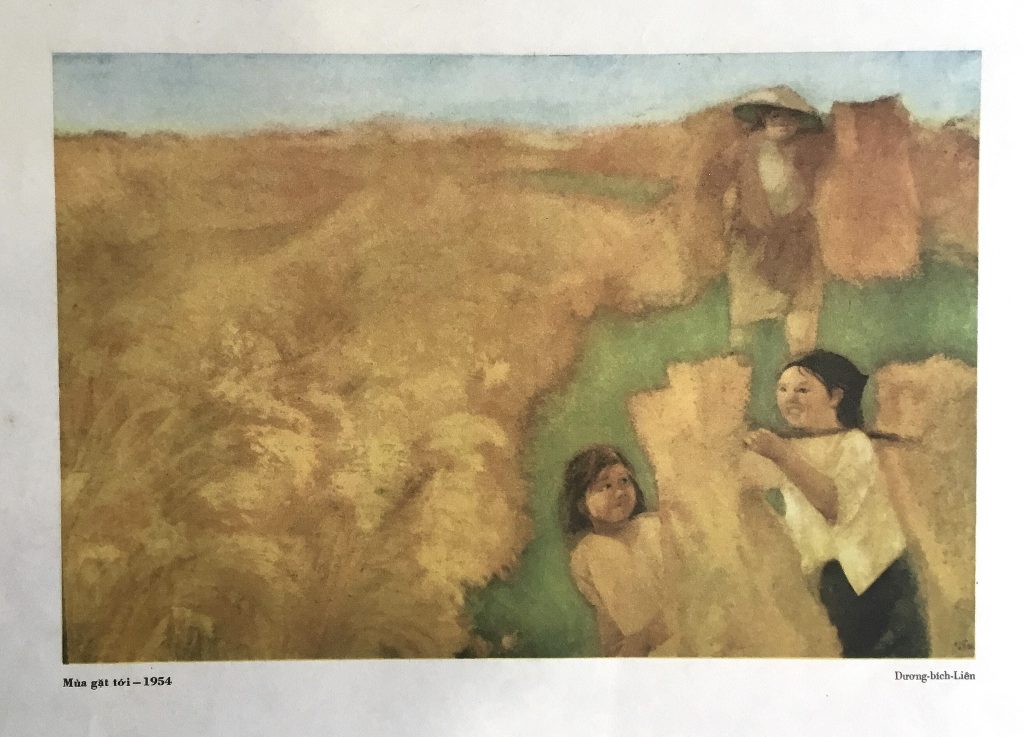
Nguyễn Văn Tỵ (1917-1992), Casting factory
Oil, 40 × 50 cm
Private collection, Hà Nội
Artist Nguyễn Văn Tỵ graduated from Indochina Fine Arts College, class 11 (1936-1941) with Hoàng Tích Chù, Nguyễn Tiến Chung, Bùi Trang Chước… Before 1945, he made lacquer paintings of landscapes, people, festivals and had the marks with Landscape of Bờ waterfall, 1940; Chèm communal house festival, 1941; Relaxing, 1942; Figure and Hạ Long bay, 1943; Mỗ village, 1944…

Artist Nguyễn Văn Tỵ by the work “The South and the North be in a home”, created in 1974
After Việt Nam gained independence, along with other artists, he had created works on the topics of revolution, production and people; he was a typical painter of revolutionary nationalism. He went to the Điện Biên Phủ campaign, participated in the Resistance Cultural department, and held a number of professional positions in cultural agencies. This was a good opportunity for him to work, create, and be imbued with the Government’s policies. His artistic perspective is clear, coherent, full of objective realism, recording the mark of the times, especially his compositions on the themes of revolutionary war and to build the homeland.

Artist Nguyễn Văn Tỵ in Hồ Chí Minh campaign, 1975
From the victory of Điện Biên Phủ and the liberation of the Capital in 1954 until the liberation of the south and unification of the country, the entire nation formed a solid bloc; producing for reinforcements for the south and building the north. Joining the heartbeat of the nation, he and many artists went on field trips to the mountains, farms, and countryside, participating in battlefields to record the most realistic images of social life. Wherever he went, he recorded documents and portrayed images to cherish and build great works. Therefore, the theme of labor which is honest and emotional, with the fire of the spirit of labor had been always burning. The oil painting Casting factory created in 1967 is a tribute, respect, and gratitude to the workers in the factories.
The painting depicts the foundry in operation, the bright red fire shining from the iron furnace mixed with the white steam, both contrasting and softening the solid characters’ shapes with few lines and areas of light and dark. The artist had a careful observation when choosing the most vivid and beautiful image in the foundry when the workers were pouring molten metal into the mold, highlighting the spirit and beauty of labor.
Written by Viet Art View
Copyrights belong to Viet Art View







